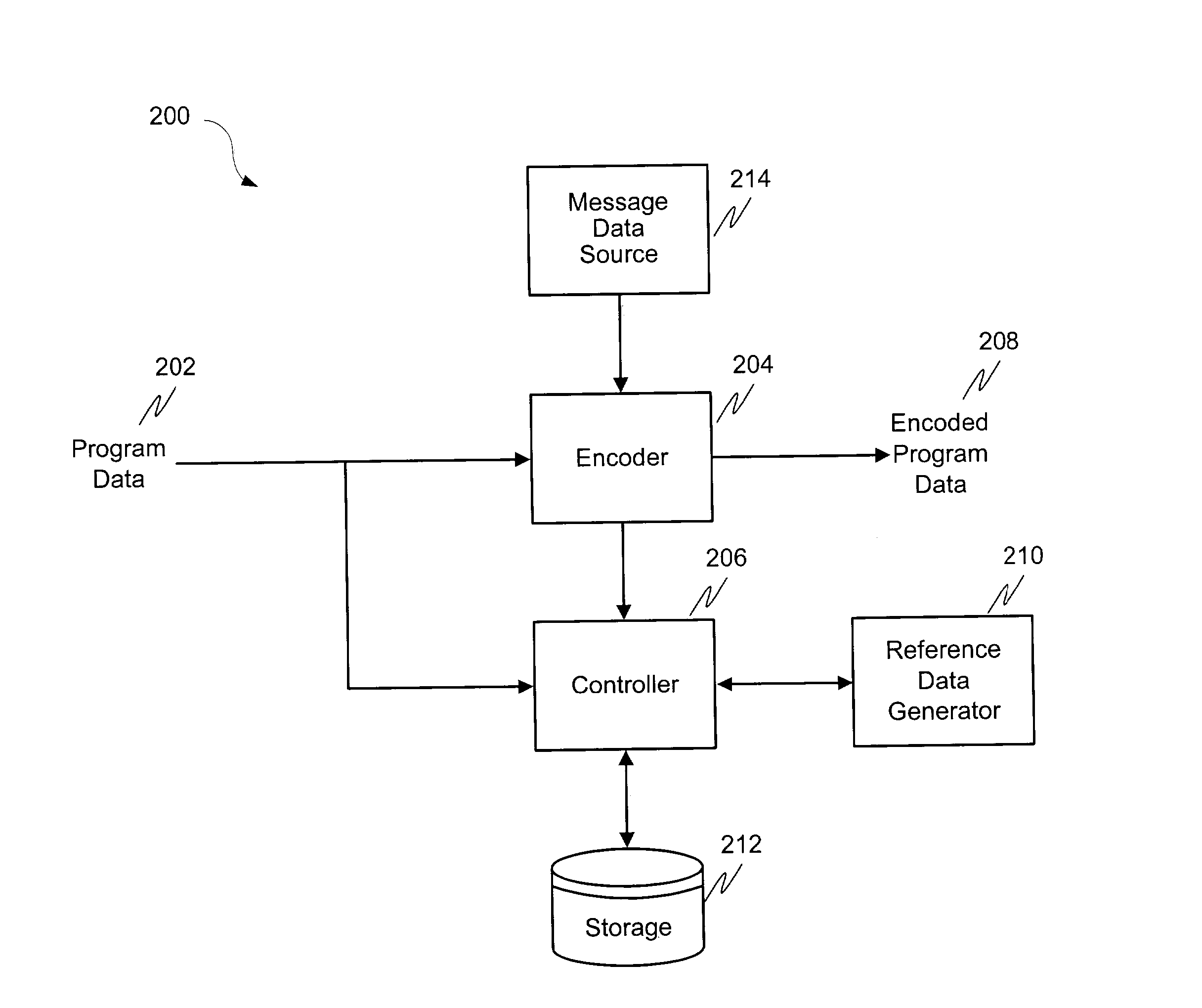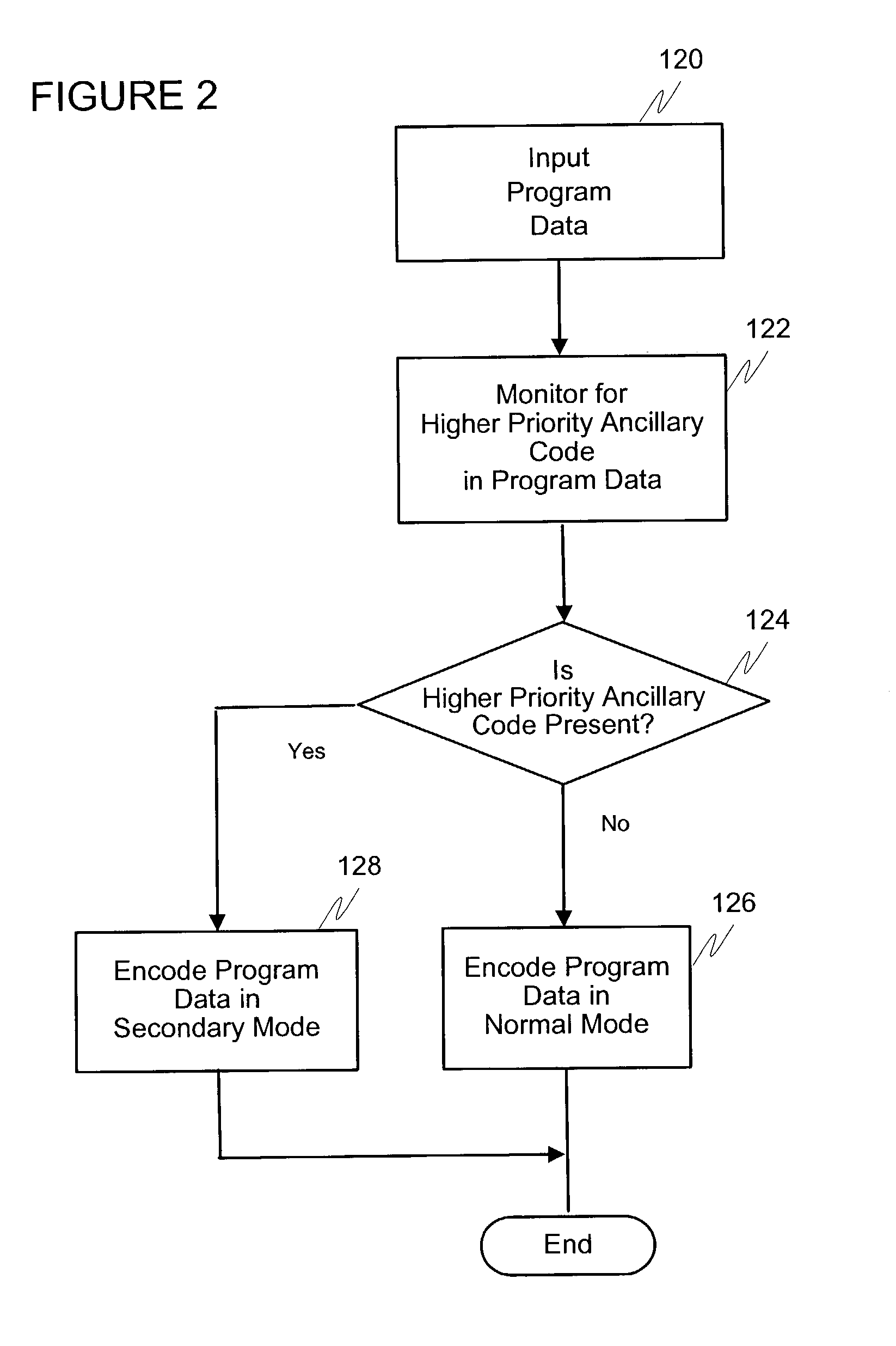Ensuring EAS performance in audio signal encoding
a technology of audio signal and eas, applied in the field of ensuring eas performance in audio signal encoding, can solve the problems that the modified eas signal may not work properly with the studio broadcast equipment, and achieve the effect of preserving the detectability of the emergency alert system (eas) code contained and reducing the first magnitude of the ancillary cod
- Summary
- Abstract
- Description
- Claims
- Application Information
AI Technical Summary
Benefits of technology
Problems solved by technology
Method used
Image
Examples
Embodiment Construction
[0036]FIG. 1 is an overview of encoding processes and systems 100 in accordance with certain embodiments of the invention. The systems and processes of FIG. 1 in certain embodiments serve to encode program data for estimating exposure of audience members to media data, such as broadcasts. In other embodiments, the systems and processes are used to encode media data for use in determining whether commercials have been aired properly, determining whether network affiliates have broadcast network programs according to the network schedule, detecting illegal copies of copyrighted works, and the like. The encoding system 100 comprises an encoder 104 and a controller 106. Encoder 104 and controller 106 each receive program data 102. Encoder 104 serves to encode program data with an ancillary code and communicates the encoded program data 108 for transmission, recording or other utilization or processing. Controller 106 is coupled to encoder 104 to exercise control over its encoding operat...
PUM
 Login to View More
Login to View More Abstract
Description
Claims
Application Information
 Login to View More
Login to View More - R&D
- Intellectual Property
- Life Sciences
- Materials
- Tech Scout
- Unparalleled Data Quality
- Higher Quality Content
- 60% Fewer Hallucinations
Browse by: Latest US Patents, China's latest patents, Technical Efficacy Thesaurus, Application Domain, Technology Topic, Popular Technical Reports.
© 2025 PatSnap. All rights reserved.Legal|Privacy policy|Modern Slavery Act Transparency Statement|Sitemap|About US| Contact US: help@patsnap.com



